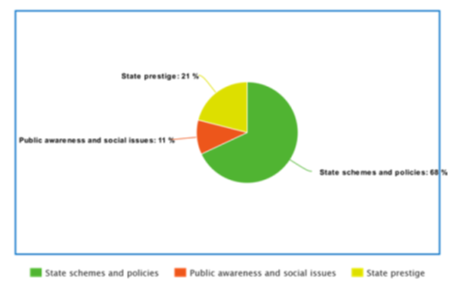


Indian Journal of Science and Technology
DOI: 10.17485/IJST/v13i31.1016
Year: 2020, Volume: 13, Issue: 31, Pages: 3188-3197
Original Article
Parismita Bhagawati1*
1Ph.D. Research Scholar, Political Science, Cotton University, 781001, India . Tel.: 918761023249
*Corresponding Author
Tel: 91 8761023249
Email: [email protected]
Received Date:27 June 2020, Accepted Date:08 August 2020, Published Date:27 August 2020
Background/Objectives: To assess the nature and optimality of website and social media usage by state governments in Northeast India in pursuit of electronic governance. Methods: A case study research design has been adopted. Among the eight northeast Indian states, two states viz. Assam and Nagaland were selected. Data for the study was accumulated through the researcher’s exchanges and interactivity with the selected state governments’ websites and social media platforms over the month of February, 2020. The websites of Government of Assam(GoA) and Government of Nagaland(GoN) were assessed on the basis of the framework of Fan. A self-developed evaluation framework for evaluating the social media sites of GoA and GoN was used. To supplement the study, additionally, brief structured interviews were conducted with the official staff at the respective state secretariats. The respondents were selected using the snowball sampling technique. Findings: The findings clearly attest that e-governance in these North East Indian states has matured to the level of transactional stage or capacity in accordance with various models of e-government maturity (Gartner, UN model, Hiller and Belanger, West, Fan). The basic e-services were available on both websites, however, citizen-government interactivity and reciprocation have not reached an optimum level. Adoption of internet-based technologies involved opportunities as well as challenges. Opportunities included revolutionisation of information dissemination, increased efficiency in public service delivery, cost and time reduction in implementing administrative tasks etc. The various challenges involved were lack of training of staff in requisite ICT skills, problems in vertical integration of government entities due to lack of sound e-governance infrastructure at the lower levels of administration. Novelty/Applications: The findings of this study can serve as crucial input in understanding the gaps in government utilisation of the internet platform and technologies and also appreciate the accomplishments of the states in pursuit of e-governance in this region. Hopefully, this study will be successful in prompting more intensive research in this area with the larger aim towards achieving a holistic and effective framework of e-democracy in the region.
Keywords: Electronic governance (e-governance); electronic services (e-services); social media technologies; North East India
© 2020 Bhagawati. This is an open-access article distributed under the terms of the Creative Commons Attribution License, which permits unrestricted use, distribution, and reproduction in any medium, provided the original author and source are credited. Published By Indian Society for Education and Environment (iSee).
Subscribe now for latest articles and news.